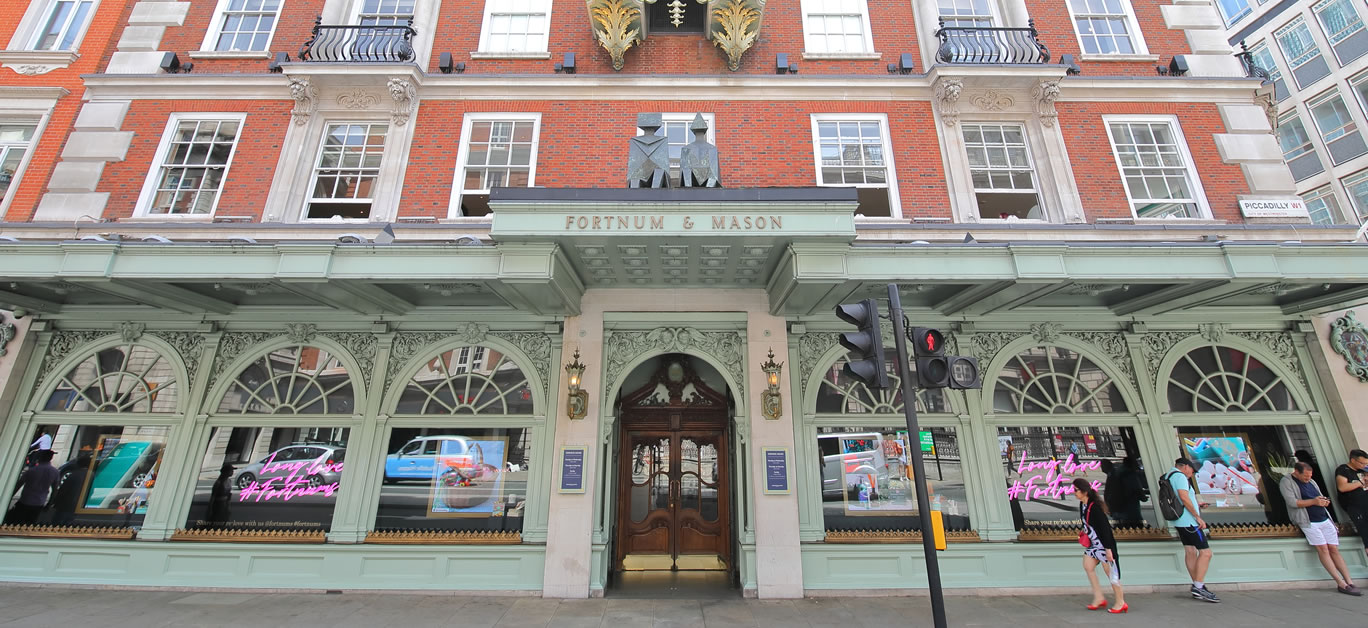Britain lays claim to the foundation of many of the world’s most historic luxury brands. Some of these brands are widely recognised names, other are more niche, their heritage and craftsmanship known only to the select few. Here we take a look at ten of the most historical luxury brands founded in Britain.
Lock and Co – 1676
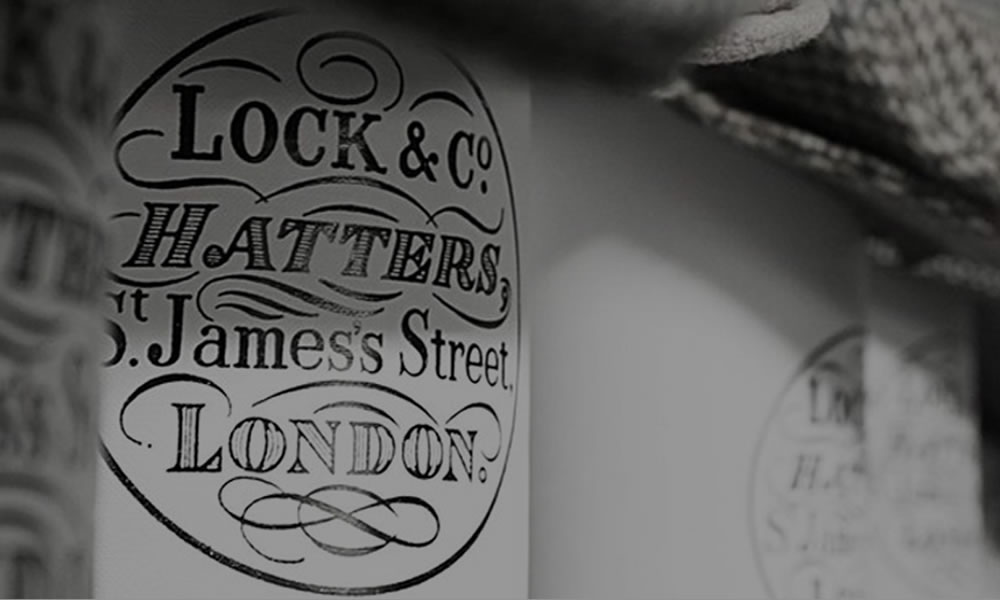
Lock and Co is the oldest hat shop in the world. In 1676, Robert Davis would open a hat shop on St James’s Street catering to the fashion desires of the upper classes. Around the same time, George Lock, a merchant, was importing coffee, chocolate and tobacco into his shops on the same famous London street. The Davis and Lock families would become intertwined over the years. In 1747, James Lock, grandson of George Lock became an apprentice hatter to Charles Davis, the son of Robert Davis. A few years later, James Lock went on to marry Charles’ daughter, Mary. The family moved into No. 6 St James’s Street, which remains the home of the company to this day.
Lock and Co became the ‘go to’ hatter for the wealthy and influential. Over the years that followed, Lord Grenville, Britain’s Prime Minister from 1806 – 1807 became a patron, Admiral Lord Nelson acquired hats from Lock, Oscar Wilde purchased a black fedora for his US lecture tour and Sir Winston Churchill wore a Lock silk hat on his wedding day to Clementine Hozier, becoming a lifelong customer. Charlie Chaplin used the services of Lock and Co.
In 1953, Lock and Co established its most high profile client. In conjunction with Garrard’s, Lock designed the fitments for the coronation crown of Queen Elizabeth II. The company would go on to receive Royal Warrants from HRH The Duke of Edinburgh and later HRH The Prince of Wales.
Celebrating 150 years of the Coke hat, Lock’s most famous creation, better known as the bowler hat, in 1999, 17 celebrity customers were invited to design their own Coke hat including Vivienne Westwood and Jimmy Choo. The company today has continued to keep at the forefront of fashion, collaborating more recently with the likes of designer Nicole Farhi on a panama.
Ede and Ravenscroft – 1689
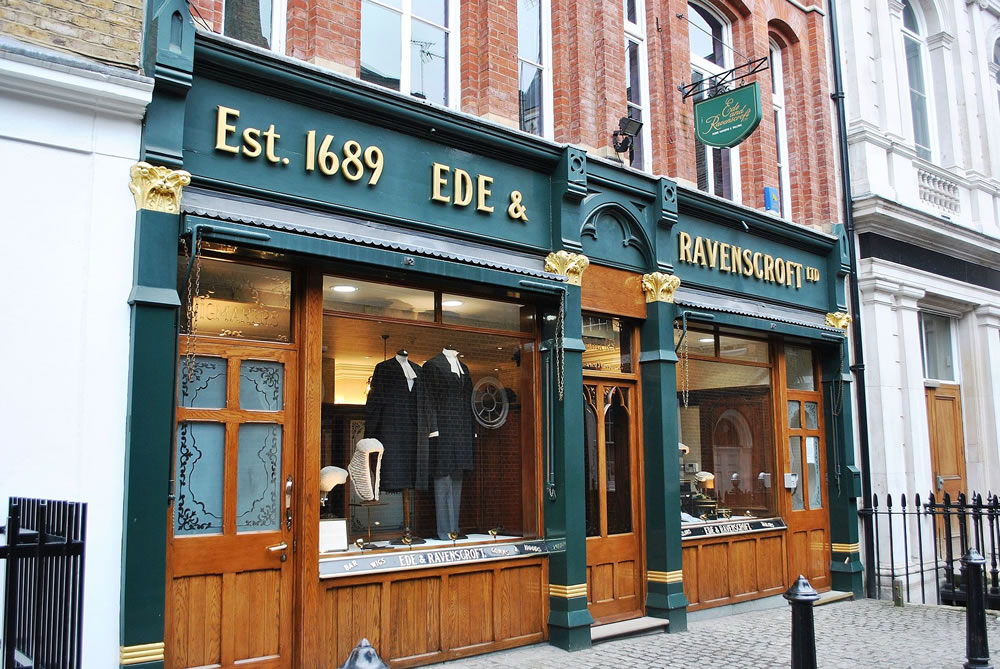
Ede and Ravenscroft holds three Royal Warrants (Her Majesty Queen Elizabeth II, HRH The Duke of Edinburgh and HRH The Prince of Wales), making it one of only a handful of companies to share this honour. The company is believed to be the oldest tailor in the world, established in 1689, the quality of the company’s work securing them the role of producers of the ceremonial robes for the coronation of King William and Queen Mary. This started a long association with British royalty and Ede & Ravenscroft has gone on to provide robes for 12 coronations and is recognised as a prestigious supplier to royalty, the judiciary, civic authorities, academia and business. The business has continued to evolve, now providing contemporary elegant menswear and accessories, both off the shelf and bespoke.
Berry Bros. and Rudd – 1698
Berry Bros. and Rudd is Britain’s oldest wine and spirit merchant, having traded since 1698 from the same store in St James’s Street that acts as the brand’s main home today. Over 300 years later, Berry Bros. and Rudd, holders of Royal Warrants from Her Majesty The Queen and HRH The Prince of Wales, has expanded successfully internationally with offices in Japan, Singapore and Hong Kong.
The company was originally founded by a widow, known only by the surname ‘Bourne’. She established a grocer’s opposite St James’s Palace, which had become the official principal residence of the British Monarch.
It would be 1810 before the company would become associated with the name ‘Berry’, this taken from George Berry who had joined the firm a number of years earlier and had driven an increased focus on wine. Two of Berry’s sons took over the business in 1845 resulting in the company’s ‘Berry Brothers’ title. Hugh Rudd, descended from a Norwich based wine merchant family joined Berry Bros. in 1920, bringing additional wine expertise to the business and his name was eventually added to the company. Family ownership would be maintained and the business would evolve over the years to adapt to the requirements of its customers. It became the first independent wine merchant to build temperature controlled wine cellars in Basingstoke in Hampshire, storing client and company wine. It continued to move with the times, launching a mail order website in 1994. International expansion has been a core part of business development in recent years.
Berry Bros. and Rudd continues to be run by the families, providing a welcoming and bespoke service for those looking to acquire or store fine wines and spirits.
Fortnum and Mason – 1707
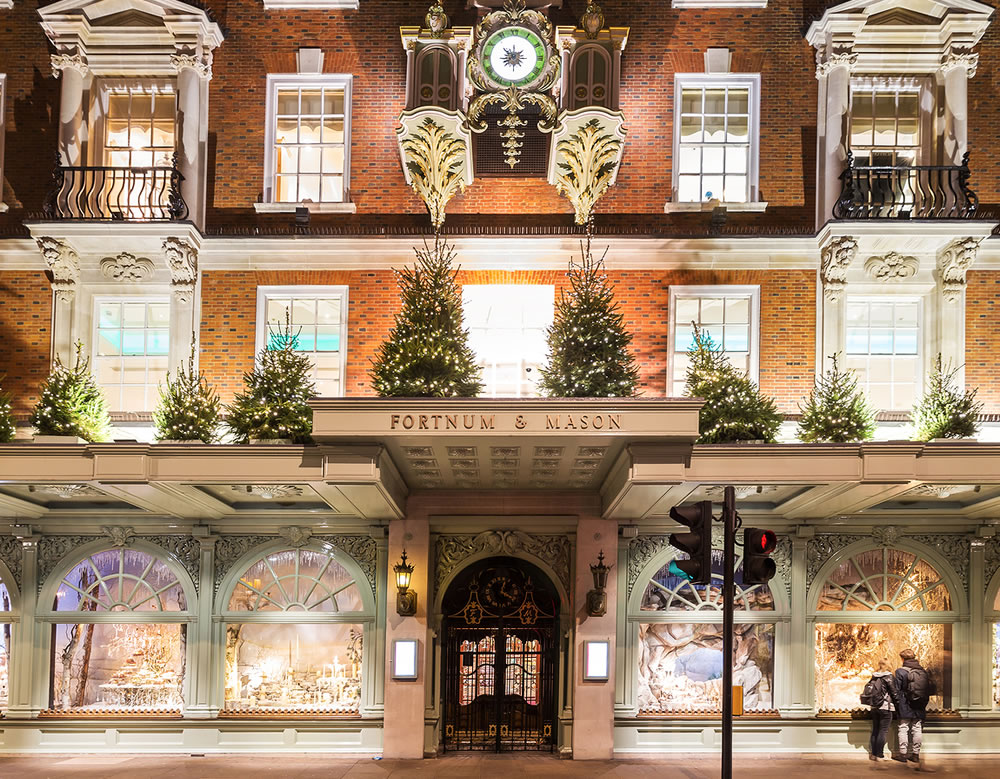
A Fortnum and Mason’s hamper is the most welcomed of Christmas gifts and synonymous with this historical department store. Amongst the myriad of treats contained within these luxurious hampers, will often be a ‘Scotch egg’, a food product common on shelves today that was invented by Fortnum and Mason in 1738 after staff were set the challenge of developing a food that was easily portable on long journeys. The challenge was answered when the concept of wrapping a hard boiled egg with sausage meat and smothering it in breadcrumbs was presented.
Fortnum and Mason hampers have gone on to play a role in politics, expeditions and wars. When the Suffragettes were imprisoned for smashing the windows of the Fortnum and Mason store in 1911, the company sent them hampers after they were released from Holloway prison. ‘Containing the likes of our famous beef tea, their contents were intended to help build up their strength.’ Fortnum and Mason supplied hampers to the frontline in the First World War, filling metal tins to ensure the contents were protected against the rats. In 1922, the Everest expedition started with a hamper from Fortnum and Mason, filled with 60 tins of quail in foie gras and four dozen bottles of champagne.
In 1964, Fortnum and Mason unveiled a new clock on the front of its store, one which has become an iconic London landmark. With bells from the same foundry as the Houses of Parliament’s Elizabeth Tower ‘Big Ben’, many stop to hear the chimes of this now famous clock.
Fortnum and Mason’s pursuit of quality is continuous. Since 2008, they have kept their own bees in rooftop hives, grown their own herbs and vegetables in their sky-high allotments and even smoked their own salmon. It’s this attention to detail and continued desire to provide only the very best products to its customers, from food to wine and spirits, to homeware and fragrances, that has elevated Fortnum and Mason to be arguably the most revered department store in the world.
Recent years have seen Fortnum and Mason expand with stores now at St Pancras International and London Heathrow’s Terminal 5. In 2019, the company also brought its famous British brand to Hong Kong, opening its first ever overseas standalone store and restaurant.
Floris – 1730
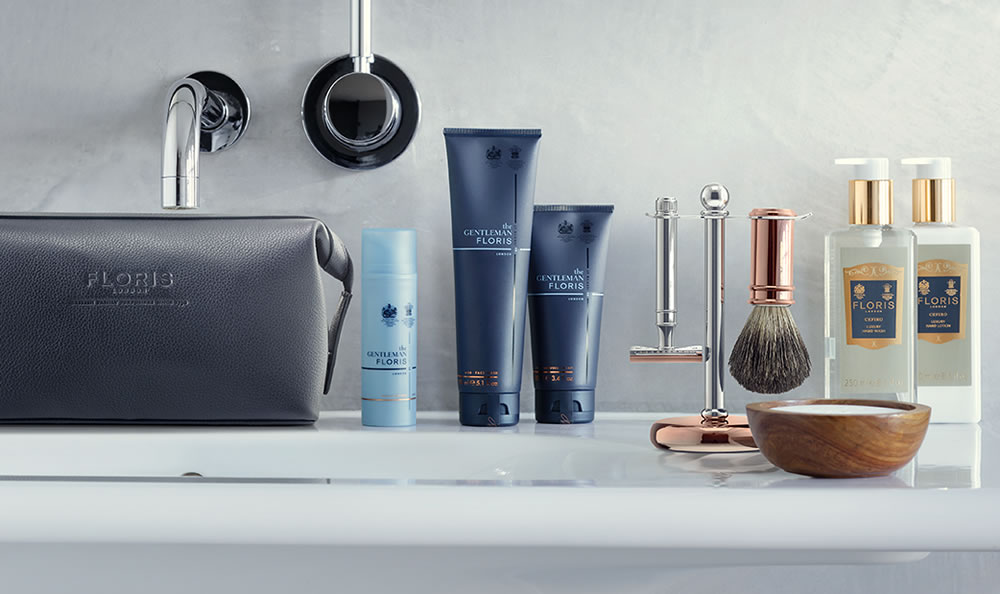
Floris was founded by Juan Famenias Floris and his wife Elizabeth. The couple began, opening their store at 89 Jermyn Street, in 1730, selling perfume, combs and shaving products. That Floris shop on Jermyn Street remains the home of the brand and is still run by further generations of the Floris family.
Floris received their first Royal Warrant as Smooth Pointed Comb Maker to His Majesty King George IV in 1820. Combs, toothbrushes and mouthwashes, alongside combs, were a speciality of Floris at this time, and Floris products became highly sought after. Floris would continue to secure prestigious and famous clients over the years. The company retains an invoice dated from 1934 for fragrances purchased my Sir Winston Churchill, both of his chosen products remaining part of the Floris Signature Collection today.
The 1950s would start to see the Floris name spread internationally. The company archives show a receipt for Hollywood screen icon Marilyn Monroe, with a fragrance sent to her Beverly Hills hotel.
In 1989, Diana, Princess of Wales, opened the new Floris factory in Devon, where all the Floris products continue to be made to this day. The Floris perfumery remains at the back of the Jermyn Street store and this is where all the Floris fragrances have been created since 1730. Perfumery Director, Edward Bodenham, is a 9th generation family member and learnt his craft from his grandfather. Today, clients can create their own fragrances under the skilled guidance of the Floris perfumers.
2017 saw Floris renovate the store for the first time in over 100 years, with the company integrating a new museum space which displays some of its extraordinary archive documents.
Garrard – 1735
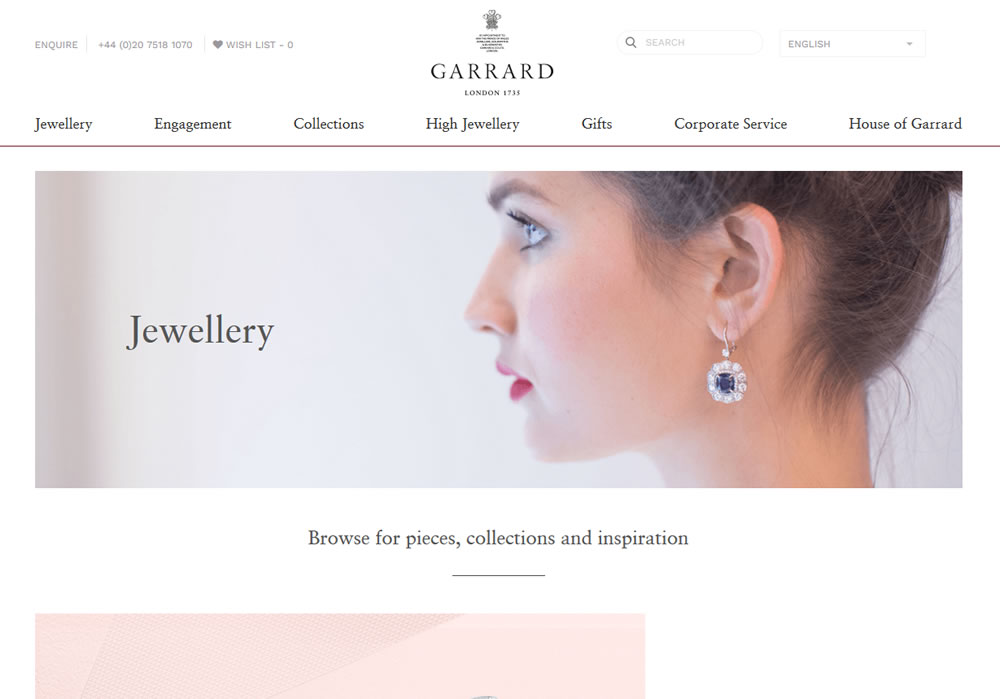
Garrard’s lays claim to being the oldest jeweller in the world, with its origins traced back to 1735.
Master silversmith George Wicks opened a store on Panton Street in London and the firm received its first commission from the British Royal Family, with an order from Frederick, Prince of Wales. This would be the beginnings of a long association with the Royal Family, leading to Garrard’s being appointed the first official Crown Jeweller in 1843 by Queen Victoria. Whilst it no longer retains this association, it has a Royal Warrant for HRH The Prince of Wales.
Tiara, necklaces, brooches and other jewels handcrafted by Garrard’s over the nearly 300 years of its operation continue to be worn by members of the Royal Family. Her Majesty Queen Elizabeth II wore a tiara on the occasion of her wedding to HRH The Duke of Edinburgh that was originally designed by Garrard’s for Queen Mary. The Duchess of Cambridge’s stunning sapphire cluster engagement ring, originally belonging to Diana, Princess of Wales, was crafted by Garrard’s. The ring features a magnificent Ceylon sapphire surrounded by 14 solitaire diamonds.
Garrard’s association with the world’s most famous gem stones is unrivalled. Prince Albert commissioned Garard’s to recut the Koh-i-Noor, the 105.6 carat diamond, now set at the centre of The Queen Mother’s crown and on display at the Tower of London. For his birthday in 1907, Kind Edward was gifted the largest gem-quality rough diamond ever found – the Cullinan Diamond. After it was cut into 9 smaller stones, the Crown requested Garrard’s set the largest in the Sovereign’s Sceptre. Cullinan I, ‘The Great Star of Africa’, weighs a staggering 530 carats.
As well as jewellery, Garrard’s has produced some of the most famous trophies in the world, including the America’s Cup, the oldest perpetual trophy in the world, the Gold Cup for Royal Ascot and the Premier League trophy.
Johnstons of Elgin – 1797
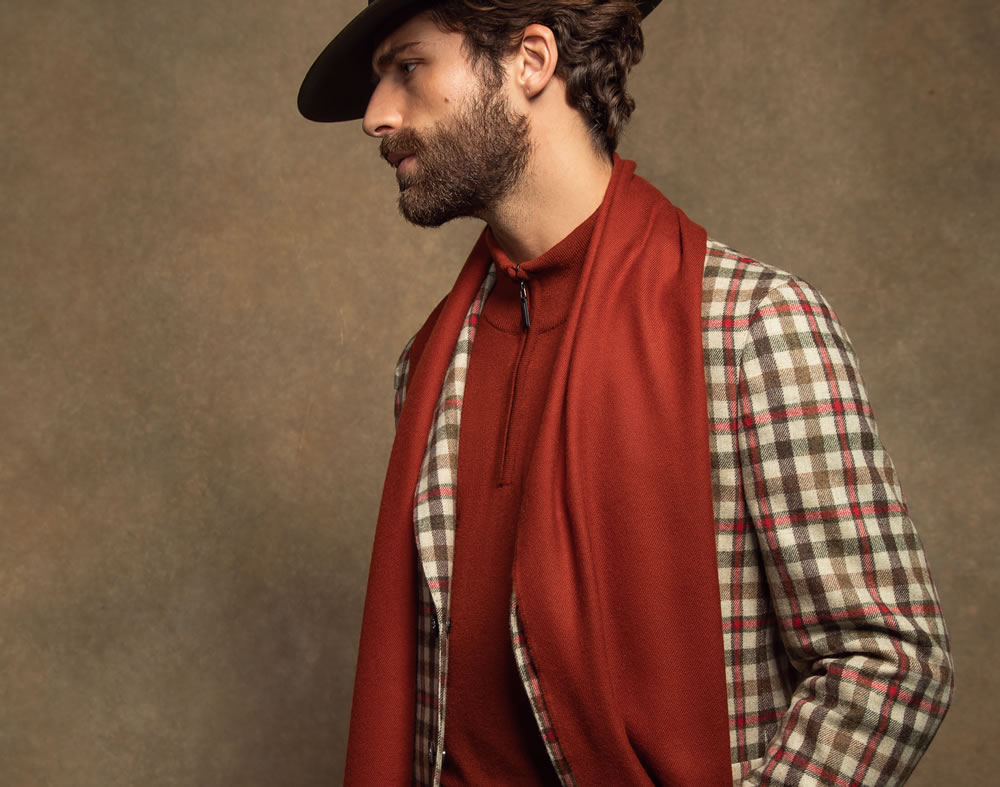
Alexander Johnston built the Elgin Mill on the banks of the River Lossie, laying the foundations for a Scottish company that would be going from strength to strength over 200 years later and enjoy an international reputation. Today, Johnstons of Elgin supplies some of the world’s leading luxury brands with its fabrics, as well as producing products under its own Johnstons of Elgin brand. The products are made in their Hawick and Elgin mills, produced by craftspeople who have learned their skills over many years. They run an apprenticeship programme, with a determination to ensure that the skills required within this industry continue to be maintained and enhanced.
Johnstons of Elgin are the only manufacturer in Scotland with the ability to take natural fibres in their raw state and turn them into luxury finished goods. Johnstons of Elgin products are made with cashmere from Mongolia and China, merino wool from Australia and the finest lambswool and vicuna. Some of its private label clients have been supplied by the company for over 100 years.
It has not always been plain sailing for the company however, with the Scottish textile industry facing tough times over the last couple of decades as mass production and lighter fabrics took a stronger foothold, resulting in a significant number of Scottish mill closures. Johnstons of Elgin has survived through constantly evolving and adapting its business model. It now balances revenues through sales to luxury fashion houses and the continued expansion of its own luxury brand providing menswear, womenswear and accessories. Their own brand sells through wholesale, their own retail and e-commerce.
Purdey – 1814
Purdey was founded in 1814 by James Purdey as a gun and rifle making business. Purdey learnt the trade as an apprentice with gunmaker Thomas Keck Hutchinson. After completing his apprenticeship, he moved to Joseph Manton of Oxford Street, climbing the ranks there before joining another revered gunmaker, Forsyth. After four years with Forsyth, Purdey decided to set out on his own, opening his own near Leicester Square, crafting single and double flintlock guns, duelling pistols and rifles.
Purdey had developed an enviable reputation from his solid and dedicated years learning his craft the likes of Manton and Forsyth and his guns attracted a long line of customers. Purdey built bespoke guns, as well as providing servicing and repairs. Additionally, he sold other shooting equipment and accessories. Purdey would eventually take over the premises of Manton in 1826. The business thrived with its English aristocracy clientele. In 1838, Queen Victoria ordered a pair of double-barrelled pistols which were presented to the Imam of Muscat. Purdey’s received its first Royal Warrant from the then Prince of Wales in 1868 who would go on to become Kind Edward VII. Queen Victoria granted a Royal warrant in 1878.
Management of the business would be passed down the generations and the company was a vibrant one as it entered the early 20th century. Purdey would manufacture weapons’ parts and equipment for the War Department for the First World War and would do the same for the Second World War.
The business started to encounter more challenging times after the Second World War, but would be refreshed under the ownership of Richard Beaumont who, with the help of his wife, Lavinia, would expand Purdey’s into fine quality shooting wear, opening up a new revenue stream for the business.
Like Ede and Ravenscroft, Purdey remains one of only an elite handful of British businesses which hold 3 Royal Warrants for Her Majesty Queen Elizabeth II, HRH The Duke of Edinburgh and HRH The Prince of Wales.
In 1994, the company was acquired by the Richemont Group, an attempt by Beaumont to secure the future of the company. Under the Richement Group ownership and ‘by continuing our tradition of craftsmanship, excellence, and attention to detail, we hope that many generations to come will be able to enjoy the exceptional pleasure of owning a bespoke Purdey gun’.
Alex. Kirkwood and Son Ltd – 1826
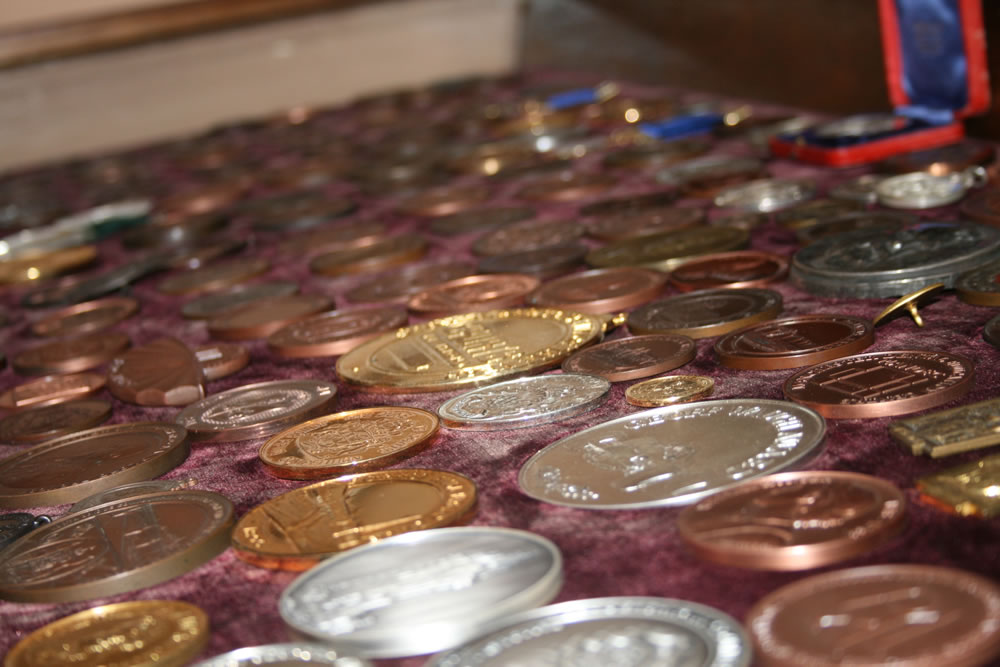
Not many will have heard of Alex. Kirkwood and Son Ltd, but this Edinburgh based business is one of Scotland’s oldest family run businesses and was established in 1826.
One of the most historic medallists, silversmiths and trophy makers in the world, the history of the firm goes back even further to 1774, when the craftsmanship and skill of James Kirkwood’s hand engravings were noticed by Sir William Forbes, who subsequently commissioned Kirkwood to produce the metal plates required for the manufacture of Scottish banknotes.
James Kirkwood’s son Robert went on to become a renowned engraver of the plates required for banknotes, pictures, maps and geographical globes. The skills required were similar to those of a medal die-cutter and it was in this way that Robert’s son, Alexander, eventually founded the company as it is today, becoming one of the finest die cutters in Scotland.
Over nearly two centuries, the business has continued to make dies and strike medals for some of the rarest and greatest medals ever produced. Two of the most famous dies are the solid silver dies created for stamping the Great Seal of Scotland. The Seal is attached to official documents to confer royal assent by the reigning Monarch and is believed to date back to 1094.
The company also produced the prestigious ‘Livingstone Medal’, awarded by the Royal Scottish Geographical Society, creating the dies and striking the medals since the award’s inception. Over the years, recipients of the medal have included Sir Edmund Hillary, Sir Ranulph Fiennes, HRH The Duke of Edinburgh, Michael Palin and Sir David Attenborough.
Today, Alex. Kirkwood and Son continues to specialise in the supply of medals, trophies, silverware and glassware to leading clubs, institutions, organisations, societies, universities and schools in the UK and internationally. An Alex. Kirkwood & Son medal is highly sought-after and many historical medals secure high values at auction.
Thomas Goode and Co – 1827
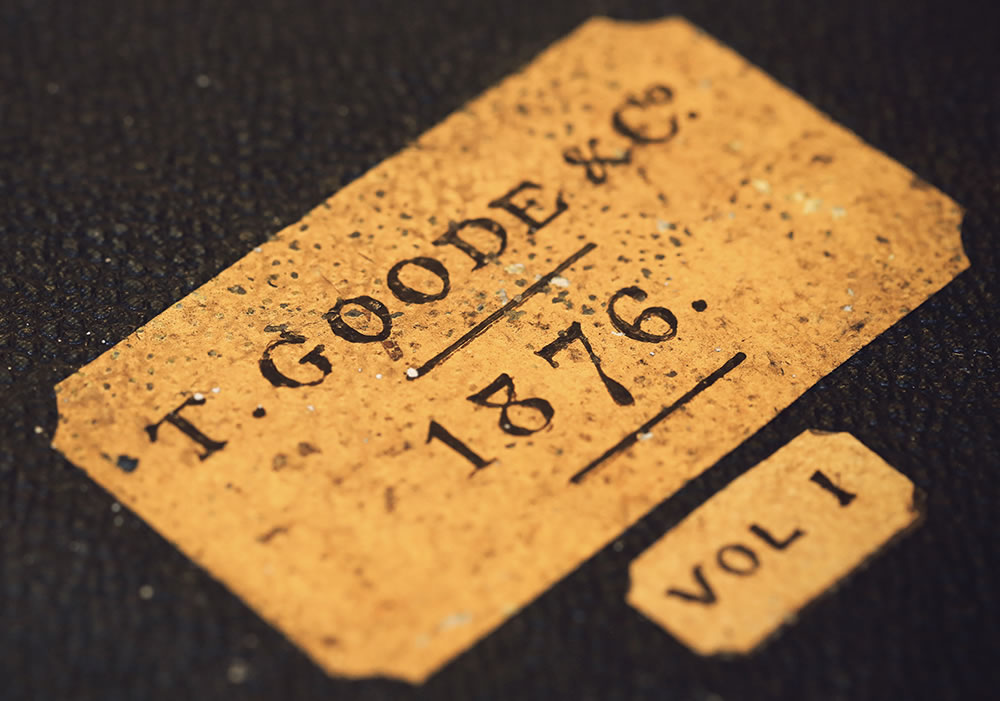
Since its foundation in 1827, Thomas Goode and Co has forged a reputation as a supplier of the finest tableware, china, silverware and glassware, showcasing its collections in its Mayfair showroom. Priding itself on personal service, excellence and luxury, Thomas Goode clients visit the store to acquire fine English china from the Thomas Goode Collection, porcelain by Herend and Meissen; fine china by Royal Crown Derby; glass and crystalware by William Yeoward, Saint-Louis and Lalique; and silverware and cutlery by Puiforcat, Odiot and Christofle.
Whilst the showroom houses the most luxurious and famous names in tableware, its 19 South Audley Street home is also known for the 7ft tall elephants that stand proud in its windows. The ‘Elephants of Thomas Goode and Co’, loaned in 2015 to the Tate Britain as the centrepiece of the Sculpture Victorious Exhibition, were originally commissioned for the entrance of Thomas Goode and Co’s court at The Paris Universal Exhibition of 1889 and were the largest commission ever undertaken by the historical Minton pottery.
Thomas Goode and Co has Royal Warrants from Her Majesty Queen Elizabeth II and HRH The Prince of Wales, having provided bespoke china for Buckingham Palace and having been commissioned in 1981 to create a dinner service as a wedding gift to the Prince and Princess of Wales.
Image credit at the very top of the article: TK Kurikawa/Bigstock.com












